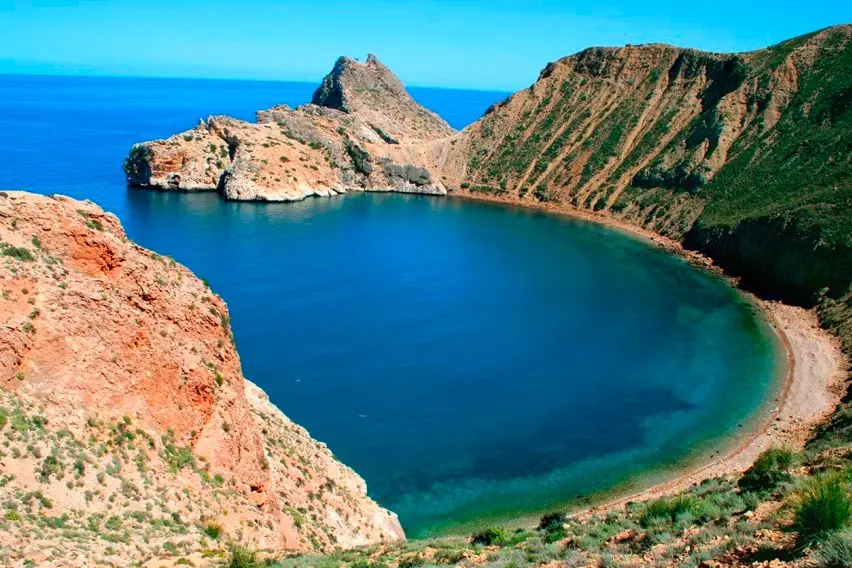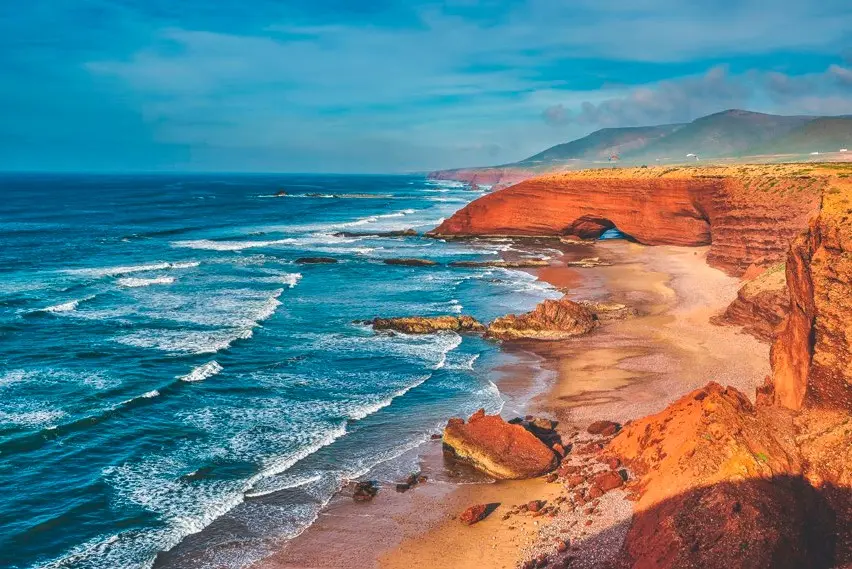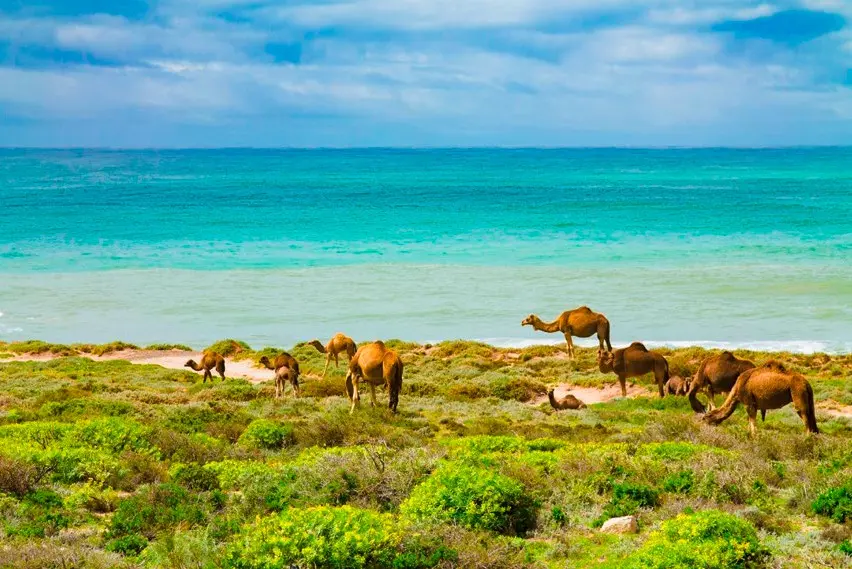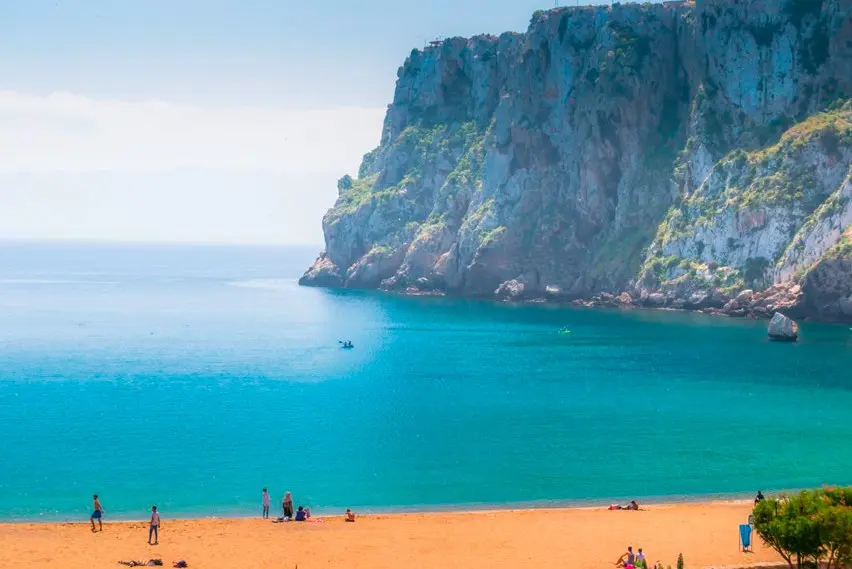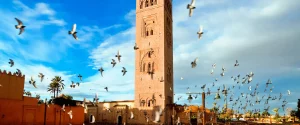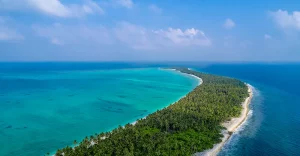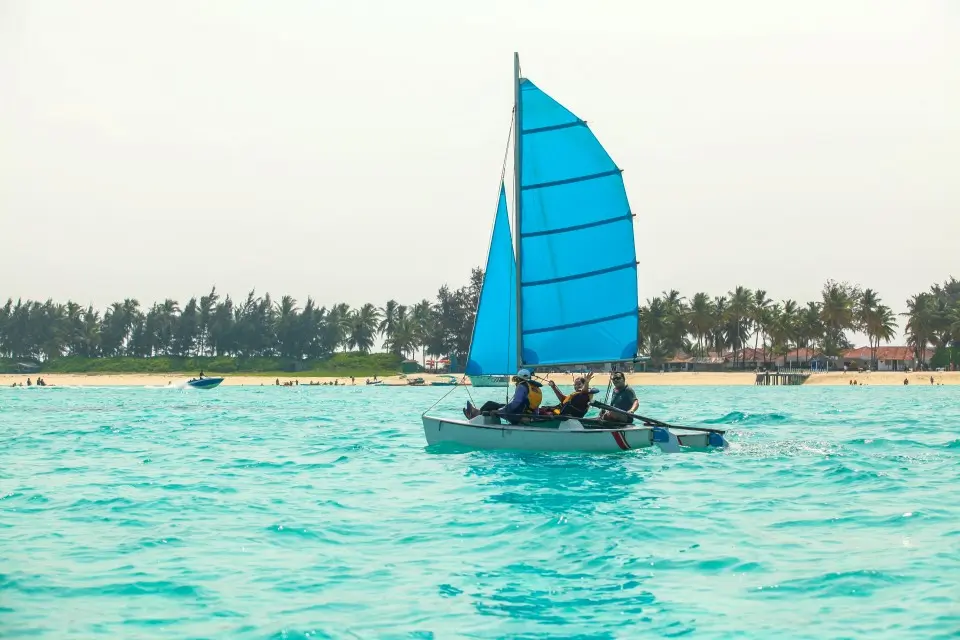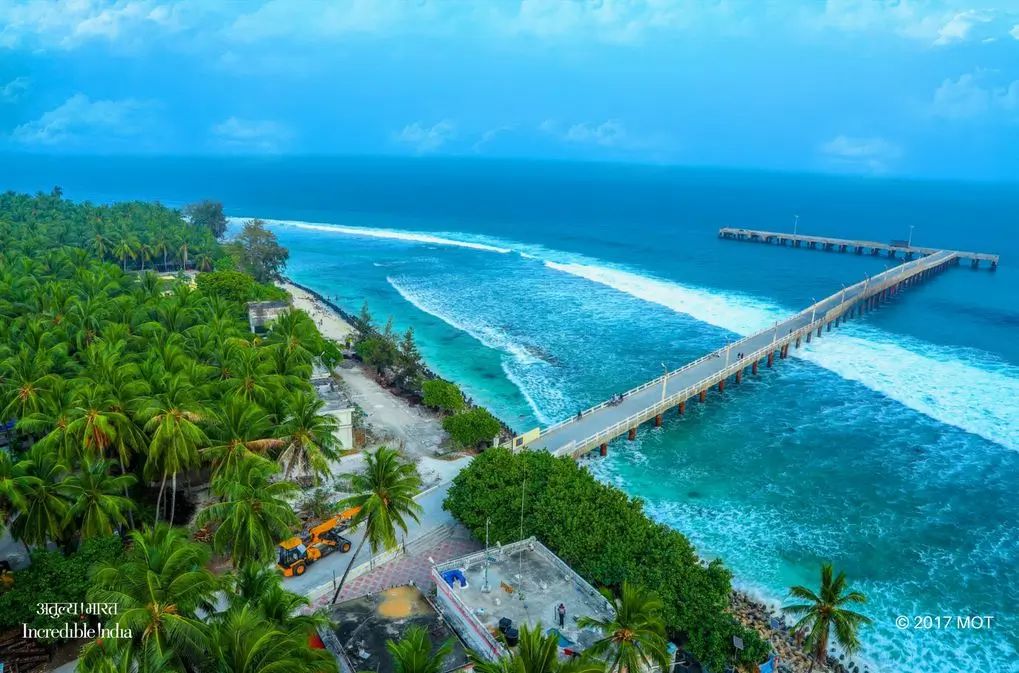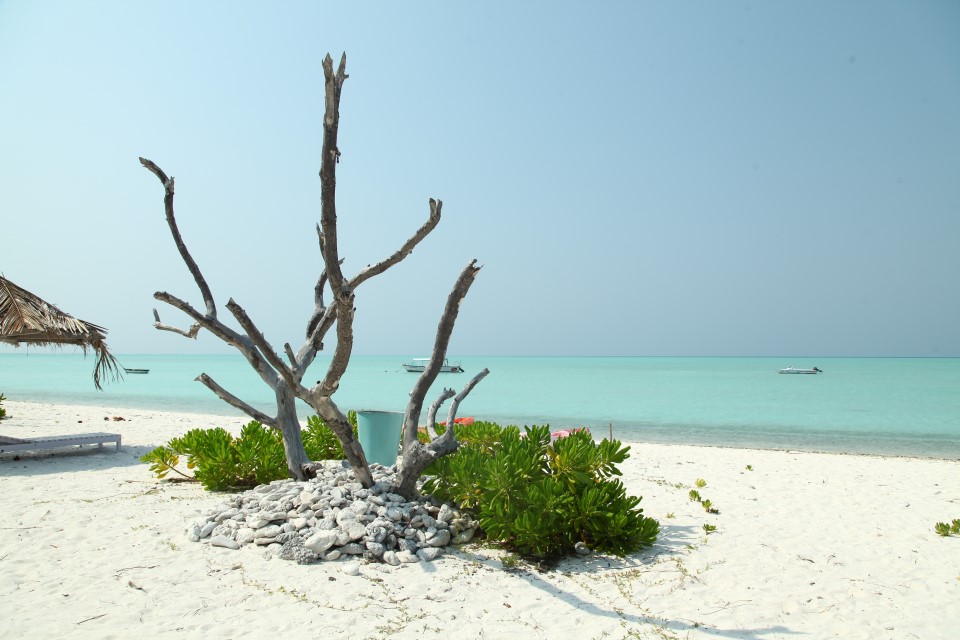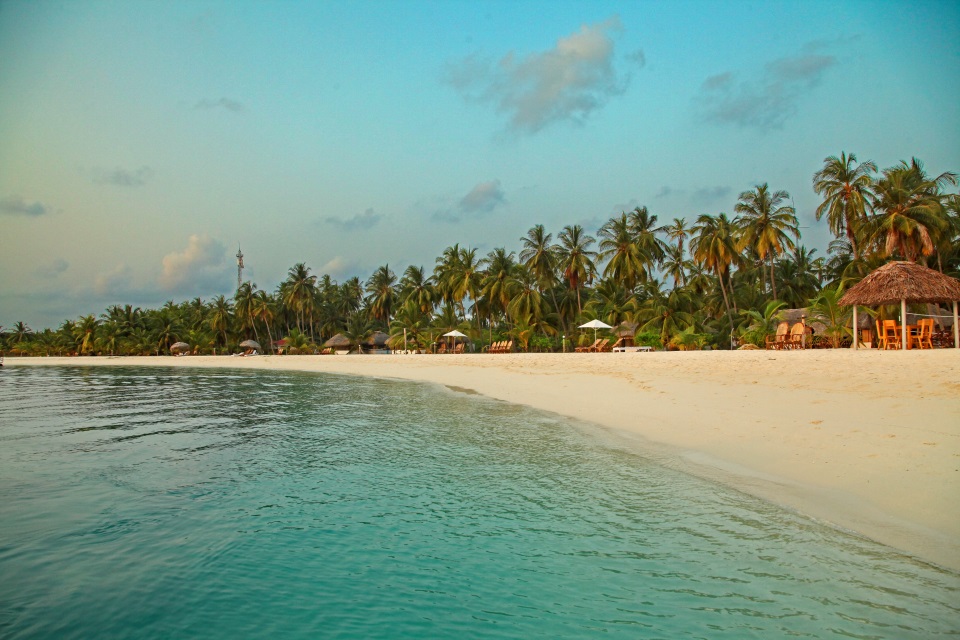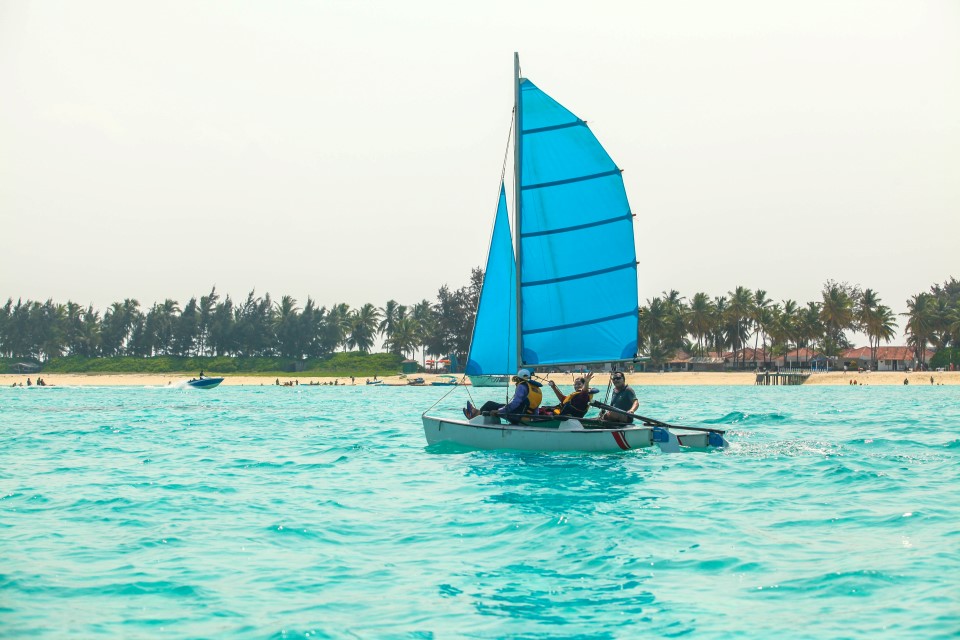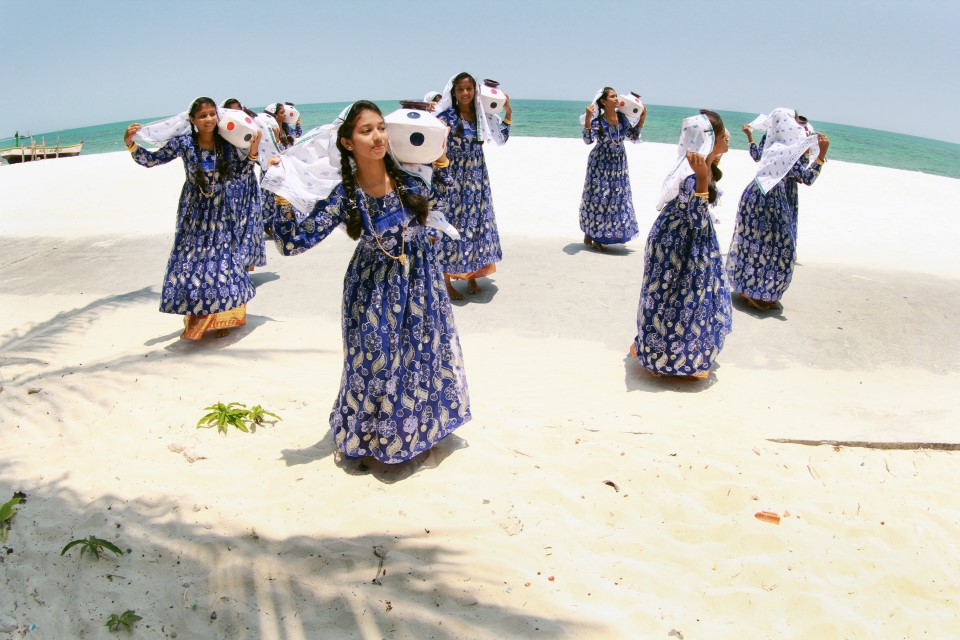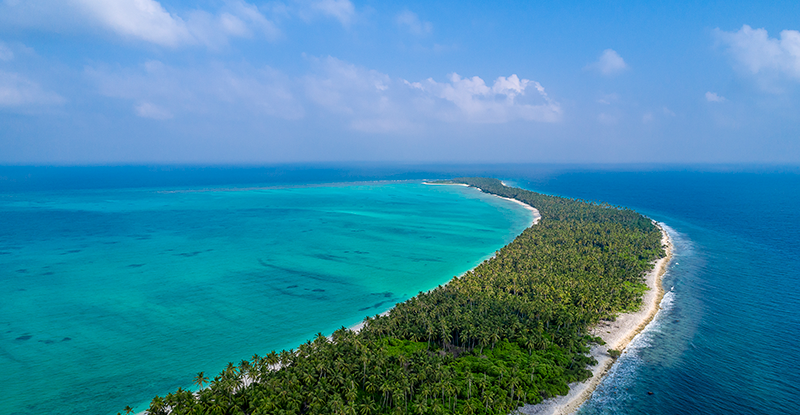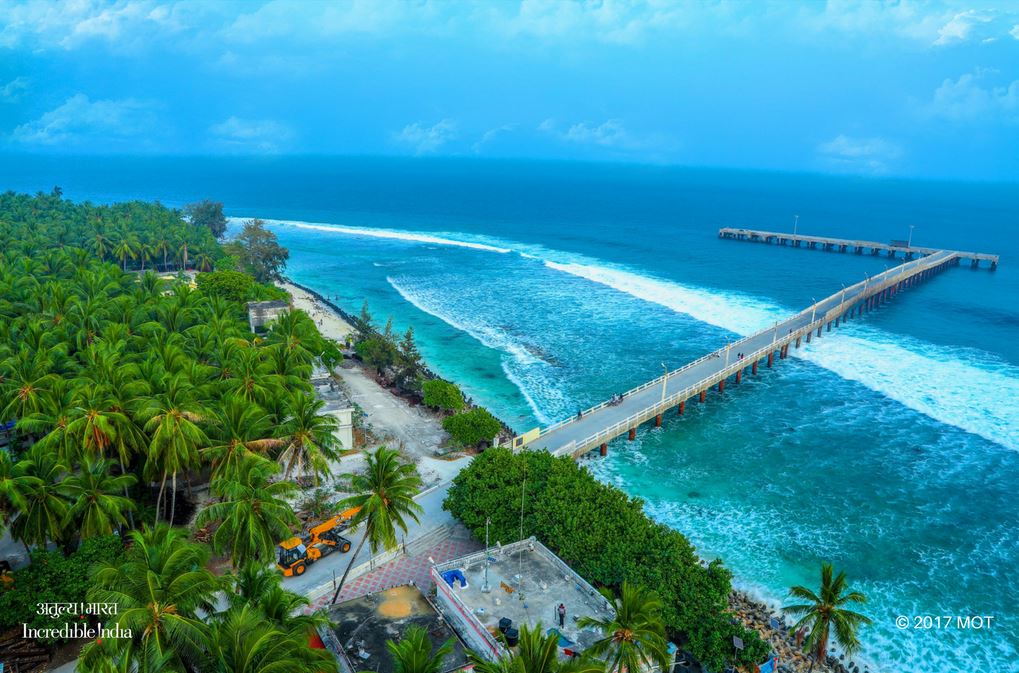One of the most famous tourist destinations in southern India, the town of Mahabalipuram is located in the Kancheepuram district of Tamil Nadu, about 60 km from the state capital of Chennai. The seaside town on the east coast is currently a famed location for its religious and historical significance.
Situated just about 12 m above sea level off the Coromandel Coast, it has a vast historical background, dating back to its use as a seaport during the time of the ancient Indian traders such as Periplus and Ptolemy, which was around the 1st century CE.
It has some monuments within the locality that boast of incredible architecture that is characteristic of the Indian culture at the time of the Pallavas, who were responsible for a majority of the constructions and carvings seen in the town today.
It was officially established as the town it is today under the rule of the British in India. With the typical tropical climate of seaside towns of Tamil Nadu, Mahabalipuram continues to draw a majority of tourists who visit the state.
For those travelling to this historic town, here are some of the most amazing places to visit near Mahabalipuram.
1. Monuments at Mahabalipuram
This monument complex is one of the most popular places to visit in Mahabalipuram, being declared a UNESCO World Heritage site in 1984. It has almost 40 sanctuaries, which includes several cave temples and monuments from the Pallava period, all of which boast spectacular architectural work and historical as well as religious significance.
Though the monument complex includes some of the major places to visit near Mahabalipuram, it is often categorized as one location, particularly due to its UNESCO status. It encompasses the essence of the town, including natural beauty, architectural marvel, and religious significance. A visit to this city would not be complete without a visit to this location, making it one of the top places to visit near Mahabalipuram.
2. Mamallapuram lighthouse
Also known as the Mahabalipuram Lighthouse, this landmark is the oldest lighthouse in India, situated on the Coromandel Coast. It was opened to tourists in 2011 and has gone on to become one of the most popular places to visit near Mahabalipuram.
The original structure is said to have been constructed in 640 AD by the then ruler Mahendra Pallava, it was first commissioned to display light in 1887, and by 1904, was fully functional. There is also a temple nearby that was dedicated to the Hindu Lord Shiva, though the deity has since been removed.
Constructed atop the Mahishasura Mardhini cave on the coast of Mahabalipuram. It is a great experience and is one of the top places to visit near Mahabalipuram. It is made of natural stone and is a typical circular tower, currently maintained by the Archaeological Survey of India.
3. Pancha Pandava Cave
The largest cave temple in Mahabalipuram, and part of the UNESCO World Heritage site of the Monuments of Mahabalipuram, the Pancha Pandava Cave Temple is one of the top places to visit near Mahabalipuram. It is famed for the fantastic architecture on display, with the characteristic Indian rock-cut model being seen by and large.
The term ‘cave temple’ is used to refer to the various temples seen across the Indian sub-continent that is cut out of the preexisting rock of the cave-like structures that preceded it. It is not known who exactly constructed this temple, but it is dated back to the 7th century and is one of the ten important cave temples in the region from the Pallava rule, making it a popular location amongst the places to visit near Mahabalipuram.
4. Arjuna’s Penance
A large carved monument that is believed to be representative of the legendary story of Arjuna’s penance from the Mahabharata, this location is an inclusion in the places to visit near Mahabalipuram. The fame of this monument lies a great deal in the massive size it boasts of, with measurements of about 30m in height and 15m in width, it is located right next to the Pancha Pandava Cave temple.
Dating back all the way to the 7th century, you will find intricate stone carvings over the massive structure all the more commendable. The story speaks of how Arjuna underwent severe penance to earn Shiva’s weapon. It is also known as the Descent of the Ganges, as the carvings here are believed to be a depiction of the descent of the holy river from the heavens, according to Hindu mythology. This ancient historical monument is a must-see amongst places to visit near Mahabalipuram.
5. Krishna’s Butterball
A trip to Mahabalipuram would be incomplete without a visit to the intriguing Krishna’s Butterball. Perhaps the most famous locations of all, the massive circular granite stone looks to be strategically balanced on the slope. The curiosity arises from the multiple failed attempts in the past made by rulers to dislocate the stone to avoid mishaps.
Rightfully taken to be one of the top places to visit near Mahabalipuram, the name is earned because of the characteristic of this monument. It continues to attract many a tourist who takes pictures next to the “butterball” in a mock act of trying to push it down the slope.
It seems to be along the lines of the famous story in Hindu mythology which states that Lord Krishna often stole butter from his mother’s container, hence forming the name that was apparently coined by a local tour guide during the visit of the former Prime Minister Indira Gandhi. It is a landmark in the town that is believed to be almost 1200 years old, and one of the places to visit near Mahabalipuram.
6. Shore Temple
The town of Mahabalipuram is a seaside location, yet this characteristic geographical location is often overlooked for the many temples and religious locations situated across the town. However, for those tourists who wish to get the seaside experience the town has to offer, one of the top places to visit near Mahabalipuram will be the Shore temple.
Constructed during the early 8th century, it is a structural temple that is carved with blocks of granite. It is also known as the Seven Pagodas Temple due to its appearance to sailors that used it as a navigational landmark when sailing. Though the mystery of the 7 pagodas was only discovered during the tragic tsunami of 2004.
The historic temple was harshly affected by the tsunami that hit the Indian coast in December of 2004. This also led to the exposition of another similar temple that had been completely submerged earlier. When the shoreline was seen receding right before the massive waves hit, many tourists on the coast swore they saw ancient structures on the seabed.
This led to underwater expeditions which uncovered two more submerged temples, strengthening the famous claims that there were seven temples, hence ‘Seven Pagodas’ at the site earlier, out of which six now remain submerged. Any tourist coming to the area will want to place this temple on their list of places to visit near Mahabalipuram.
7. Wide beach
The Wide beach is one of the few locations in Mahabalipuram that offers an experience of the coast with the rich heritage of a religious background that the coastal town is so very famous for. Location of the Shore temple, it is also known as the ‘risky’ beach, due to the harsh nature of the water in these areas, sometimes making it quite unsafe for visitors to enter the water.
It remains one of the most popular places to visit near Mahabalipuram, seeing a large number of tourists coming to these shores on a daily basis, and is believed to be an integral part of the overall experience of the town.
8. Pancha Rathas
Perhaps the most famous location in the town, the Pancha Rathas are one of the main places to visit near Mahabalipuram. It consists of five monuments that make up the Pancha Ratha complex, each resembling a chariot that is sculpted on a single monolith, at a slight upslope.
The five monuments are known as Nakula Sahadeva Ratha, Dharmaraja Ratha, Arjuna Ratha, Bhima Ratha, and Draupadi Ratha. Named after four of the Pandava brothers and Draupadi, who was their common wife, it is believed to have been constructed under the King Mahendravarman I and his successor.
Though they are often mistaken to be temples, they do not possess any deities within their structures and were in fact never taken to completion due to the death of their constructor the Pallava king. This beautiful display of Indian architecture alongside wonderful historical and religious backgrounds make the Pancha Rathas one of the most popular places to visit near Mahabalipuram.
9. Seashell Museum
Located close to the Pancha Rathas Monument, the Indian Sea Shell Museum is one of the newer locations that is rising in popularity as one of the places to visit near Mahabalipuram. It has a varied display on offer, including snails, oysters and many other varieties of shells.
A unique, educational experience amongst the vast specimens of shells, numbering more than 40,000, this is one of the most popular places to visit near Mahabalipuram due to the unparalleled, rarer tourist experience it has on offer. It is perfect for a family outing, as it also houses a seafood restaurant and tourist boutique on its premises, assuring the full experience of the tourist location of the seaside town of Mahabalipuram.
10. Sculpture Museum
Home to more than 3000 works of art, predominantly sculptures and paintings, this excellent museum is one of the most popular places to visit near Mahabalipuram. Located just 1 km away from the Mahabalipuram bus stop, any tourist who has an interest in exploring the rich heritage of South India will find this location to be a haven, given the rich historical significance that almost every sculpture in the museum possesses.
The sculptures are made from a variety of items, including wood, cement, brass, and metal. Predominantly related to Hindu mythology and the various gods and goddesses of the religion, it reflects the essence of this religiously significant town. It provides great insight into Hindu mythology, while also having on display some Buddhists sculptures as well. The popular destination is frequented by visitors from the world over, making it one of the most famous places to visit near Mahabalipuram.
11. Varaha cave temple
Another wonderful example of the beautiful architecture of the indigenous temples of this seaside town, the Varaha cave temple is one of the most famous places to visit near Mahabalipuram. It boasts of a large cave temple constructed in the typical rock cut style of architecture that was characteristic of the region in the period around the 7th It is acclaimed worldwide as one of the best examples of the Vishwakarma Sthapathis style of architecture and is known part of the UNESCO World Heritage site located in Mahabalipuram.
Famed especially for its prominent structure that depicts Lord Vishu in his boar or ‘Varaha’ form, this location sees a great number of tourists frequent its site, making it one of the highly popular places to visit near Mahabalipuram.
12. Ganesha Ratha Temple
One of the ten stone-carved chariots located within the UNESCO World Heritage site in the town, the Ganesha Ratha is one of the best places to visit near Mahabalipuram as it acts as one of the finest examples of the famous monolith rock-cut architecture that was characteristic of Indian construction at the time.
It too dates back to the 7th-century rule of the Pallava kings Mahendravarman I and Narasimhavarman I. It is particularly popular as it is a completed structure, unlike a majority of the surrounding ‘rathas’ that were left uncompleted.
While initially home to a Shiva Linga which made it a prominent religious location, the linga was later removed, and the name of this ‘ratha’ was earned due to the installation of a Ganesha deity soon after. It is a magnificent display of Indian architecture and cultural heritage, making it one of the best places to visit near Mahabalipuram while travelling in the region.
An excellent town to visit regarding geographical location, religious significance and historical as well as cultural heritage, Mahabalipuram is a trip that every person who travels around India must embark upon. The insight into the Indian cultural background that is provided due to the various monuments and attractions here is unparalleled and truly inspiring. These are some amazing places to visit near Mahabalipuram is an experience of a lifetime, guaranteeing fantastic, long-lasting memories.
